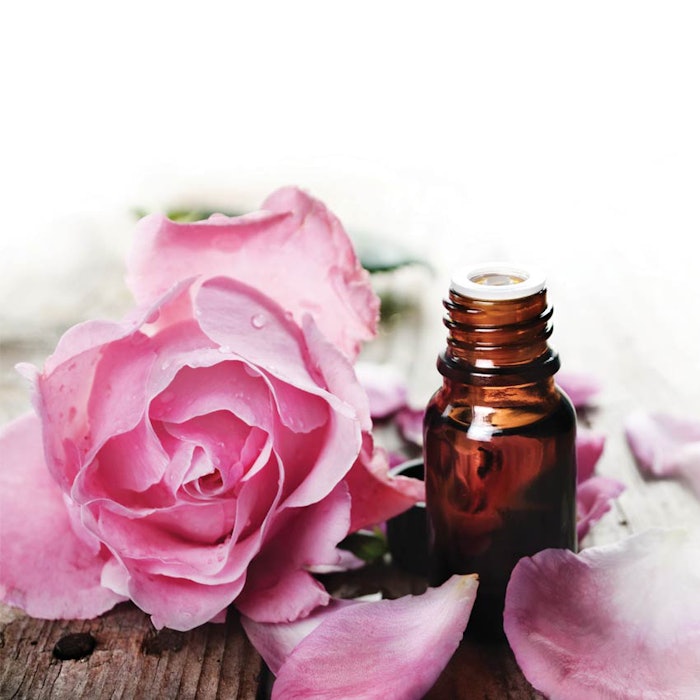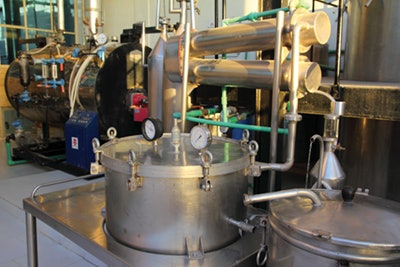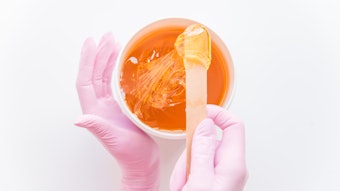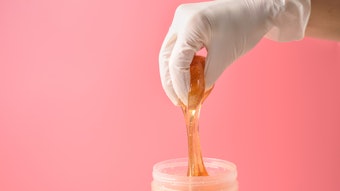
As essential oils have stepped forth, graciously offering their beauty, brilliance and natural healing, we must also be aware of the preciousness of their gifts. The demand for essential oils has reached new dimensions, which brings sustainability to the forefront of this once cottage industry. Small, family-owned farmers and distillers produce some of the world’s most exquisite botanicals and essential oils for aromatherapists, perfumers and holistic practitioners. Adulteration, standardization or synthetic substitution were never previously questioned, but now have become increasing concerns for the wellness industry.
Spa professionals want to use only the best products on their clients to get the results those clients deserve. The best essential oils are in their whole form—their complete essence. This article explains how to know whether you are purchasing quality, pure and therapeutic essential oils, meaning those that have not been recreated from plant components or adulterated with different “active” ingredients to extend the quantity of plant materials. Quality relates to the “grade” of the essential oil—how it is grown, harvested, processed or extracted. Purity refers to authenticity, meaning pure in form and unadulterated. Therapeutic is referencing the oil’s medicinal and restorative actions. Without these elements, essential oils do not live up to their true potential and are, for the lack of a more perfect word, not essential.
Oils in Action
 Essential oils are fragrant pharmacies and nurturing gifts from nature. The plants’ highly concentrated, volatile extracts of flowers, fruits, leaves, roots, spices and seeds are used to cleanse, nourish, stimulate and rejuvenate the skin and body; relieve stress; balance emotions; address pain; and create a sense of harmony and well-being. The aromatic molecules absorb and penetrate through our nose to the brain, lungs and the membrane of the skin, and pass directly into the bloodstream for immediate and effective results. Essential oils are complete in themselves. Through distillation, they contain the life force of the plant. They are the most concentrated and potent of all botanical extracts, 70 to 100 times stronger than the plant itself. It is imperative that all spa professionals use therapeutic, pure, quality essential oils when treating clients. Clients come to us for our expertise and knowledge—and results.
Essential oils are fragrant pharmacies and nurturing gifts from nature. The plants’ highly concentrated, volatile extracts of flowers, fruits, leaves, roots, spices and seeds are used to cleanse, nourish, stimulate and rejuvenate the skin and body; relieve stress; balance emotions; address pain; and create a sense of harmony and well-being. The aromatic molecules absorb and penetrate through our nose to the brain, lungs and the membrane of the skin, and pass directly into the bloodstream for immediate and effective results. Essential oils are complete in themselves. Through distillation, they contain the life force of the plant. They are the most concentrated and potent of all botanical extracts, 70 to 100 times stronger than the plant itself. It is imperative that all spa professionals use therapeutic, pure, quality essential oils when treating clients. Clients come to us for our expertise and knowledge—and results.On a physical level, essential oils could be called probiotic, for they are immune stimulants that support life. Essential oils repair tissue, balance hormones, increase circulation, stimulate collagen production and help maintain optimum moisture levels in the skin and protect it from infection.
On an emotional level, essential oils uplift the spirit, warm the soul, invigorate the senses and stimulate memory, both consciously and subconsciously. On a spiritual level, for more than 10,000 years, different cultures have used essential oils for ritual, purification, celebration and meditation. How do we find the balance and remain in the innocence of the sweet aroma of rose, the calming of true lavender, or the happiness of lime, lemon and oranges?
Quality
Often, essential oil distillers have been producers for generations. This is a labor of love that should be admired and respected. They, too, are affected by the new climate of essential oil buyers that have taken the art of distillation to a mass scale through highly sophisticated machinery and robotic harvesting, as opposed to human interactions with the plants.
Choosing an essential oil supplier means trusting them as a source. Read their company history and mission statement. Investigate their relationships with farmers and distillers. Look into how responsibly they act toward the planet. Ask the supplier if they give back to the industry to insure sustainability and a decent living for the farmer and distiller—keeping them and their families healthy, and their land sustainable.
Price. When harvesting for distillation, it takes 5,000 pounds of fresh rose blossoms to make 16 oz. (1 pound) of essential oil. It also takes 2–3 hr to hand-pick 22 pounds of rose blossoms. This would yield three bags per day. One ounce of Bulgarian Rose Otto (Rosa damascena) costs $450.00–500.00. Plants that produce a relatively high percentage of essential oil, such as rosemary, thyme and sage, use approximately 500 pounds of plant material to produce 32 oz. (2 pounds) of essential oil.
The amount of essential oil the distiller obtains from a plant depends on harvest time such as day and year, since it relates to climate and conditions for that year; the type and health of the plant; the amount of time it takes to distill the plant; and the temperature and pressure the plant is under in the still. Picture growing the crop, the labor for harvesting these volumes of plant material, the time in distilling, preparing and packaging it into containers, transporting the product thousands of miles to the supplier’s doorstep and rebottling it for the marketplace. Quality essential oils are worth the extra cost.
Certification. Make sure you ask your supplier if their essential oil is organic or certified organic. If it is not certified, find out whether the soil and environmental conditions are acceptable. Ask the supplier if the plants grow with clean water and clean air. While some farmers do not have the finances to certify their crops as organic, many have been growing and harvesting on the same land for decades. Certification organizations include the following.
Demeter. The only organization that certifies biodynamic farmers and products is Demeter.
ECOCERT. This organic certification organization was founded in France in 1991. Although it is based in Europe, the group conducts inspections in more than 80 countries, making it one of the largest organic certification organizations in the world.
U.S. Department of Agriculture/National Organic Program (NOP). This certifier is responsible for developing and enforcing U.S. national standards for organically produced agricultural products.
Oregon Tilth. This American nonprofit membership organization is dedicated to supporting and advocating for organic food and farming. Its purpose is to educate gardeners, farmers, legislators and the general public about the need to develop and use sustainable growing practices that promote soil health, conserve natural resources and prevent environmental degradation while producing a clean and healthful food supply for humanity.
Purity, Authenticity
Some suppliers test their essential oils using gas chromatography-mass spectrometry (GC-MS). This method is the most frequently used to analyze the composition of essential oils. It separates volatile compounds in a sample to identify each component according to its molecular mass spectrum. GC-MS can detect the purity and often the source of an oil. Few consumers are trained to interpret these, however, and it can be an expensive process.
Train your nose for purity and quality by purchasing your essential oils from knowledgeable, ethical, professional suppliers. The nose does know and it does not take long. This is one of our most skillful senses and just needs practice and fine tuning. Scents make the past present as no other senses can.
It is important to note that not all essential oils remain the same exact aroma from year to year. This is the beauty of nature; to teach us to be flexible and aware of our surroundings and environment, which are ever-changing and never constant. Like a fine wine, all the elements play a part of the whole. It is important, when plants are harvested in the wild, that enough plants remain to return to yet another year for yet another harvest.
You can also ask you supplier for material safety data sheets (MSDSs) on the essential oils you purchase. Here you will see the origin of the plant, odor and color, parts of the plants used, how it was grown (wild, organic, certified organic or conventional), and shelf life.
Therapeutic
One part of the therapeutic benefits of essential oils is being sure they are quality, pure oils. The other part is making sure you are choosing the right essential oils for your clients’ specific needs.
Identify the qualities you are looking for in an essential oil, such as having calming or stimulating effects. Based on your clientele and specific needs, the chemical components in the essential oil will help in your decision. For example, esters or flower oils that are relaxing, soothing and anti-inflammatory include clary sage, lavender or ylang ylang; alcohols like marjoram, rose geranium and tea tree are tonifying, stimulating, antibacterial and antiviral.
Essential oils are 70 to 100 times stronger than the plant itself, so in aromatherapy, more is not better. The dilution of essential oils into high-quality, organic carrier oils, unscented crèmes, lotions and balms is quite affordable for the practitioner. Simply add 5 to 6 drops for a 1% dilution into your carrier for a beautiful, therapeutic treatment. Or you can create a treatment with a 2% dilution using 10 to 12 drops, for a chronic skin or body condition. Just a drop of essential oil can even be used as a homeopathic avenue to subtly treat body energy, when used for different modalities such as Reiki and massage.
Storing the oils properly will also help to ensure their therapeutic benefit. Shelf life varies between essential oils, so keeping them in amber or opaque glass in a cool, dry place will preserve their freshness and potency. When stored properly, they can have a shelf life of several years.
Make Oils Essential For Your Spa
Using essential oils in your everyday treatments and spa rooms by applying them topically or diffusing them into the air not only creates an incredible ambience of serenity and sanctuary, but is also stimulating to the immune system for optimum health in both the client and practitioner. The use of essential oils as a lifestyle is not only practical, it creates a sense of well-being for all of those around you. “In the garden of the spirit lies the pathway to the senses.”










